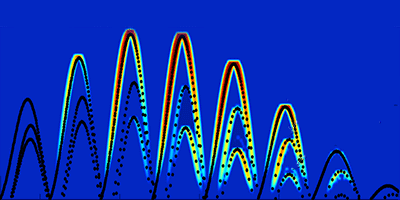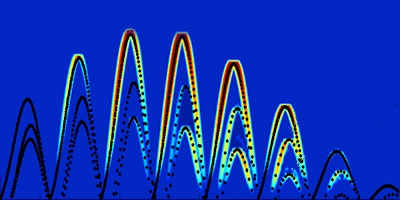Quickening the Pulse
Researchers use ultrashort flashes of light to probe fast movements in the atomic world. Femtosecond ( ) laser pulses, now routine, are fast enough to follow the motion of atoms and have been used to watch the unfolding of chemical reactions. Attosecond ( ) pulses, demonstrated in the last decade, can capture the movements of electrons. But physicists want to push these limits ever further. Zeptosecond ( ) flashes, not yet available, could capture the even faster dynamics of subatomic particles, such as neutrons and protons coming together to form a nucleus, or coming apart during nuclear fission. In Physical Review Letters, Carlos Hernández-García from the University of Salamanca, Spain, and JILA in Boulder, Colorado, and colleagues report a theoretical proposal for the generation of sequences of zeptosecond x-ray pulses.
In the authors’ scheme, infrared laser pulses are used to excite an atomic gas: as in similar approaches for attosecond generation, the laser field strips electrons from the atoms, and then drives them back to the parent ion when the sign of the field reverses. When the electrons rejoin the atom, they release their kinetic energy in the form of high-order harmonic frequencies in the x-ray range. Compared to attosecond schemes, the main novelty is the use of driving lasers at longer wavelengths: using a recently developed formalism to model high-harmonic generation, the authors calculate that if the infrared wavelength exceeds micrometers, electron wave packets emitted at different phases of the excitation cycle interfere to generate pulsed waveforms with durations below one attosecond. – Matteo Rini





